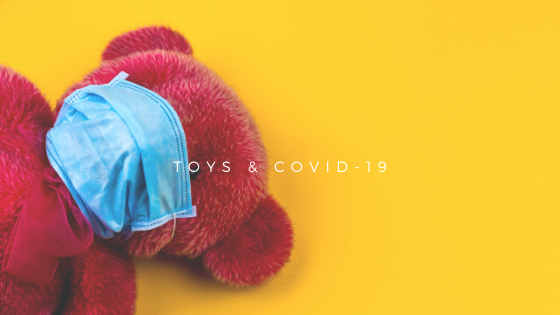Finishing up last-minute holiday shopping? If you still have gifts to buy for the kids on your list, Cynthia Hockman, ARNP, MS, CPNP, UnityPoint Health, recommends the following developmental toys for babies and toddlers to make play fun and educational.
Infants: 0-4 Months
“Babies prepare for developmental achievements during their early months through a mix of motor, sensory and emotional experience,” Cynthia says. “Sensory toys involving textures, sounds and bright, contrasting colors are all great developmental choices for babies. By 4-months-old, babies can bring their hands together in the midline and use their eyes to coordinate hand movement.”
| Toy Suggestions | Developmental Benefits |
| Rattles | Build grip and tactile stimulation |
| Mirrors | Improve focus on faces and objects (8-12 inches away). Stimulate social and language development. |
| Musical mobiles | Stimulate hearing, stimulate infant to make sounds |
| Tripod gyms with dangling toys | Enhance reach and grasp; keeping head in midline, bringing hands together in midline |
| Books with baby faces, animals, high-contrast |
Speech and language development, social and cognitive development |
| Colorful floor play mats | Enhance tummy play, developing strength in arms/legs |
Cynthia’s Personal Favorites:
- Tolo Tumble Ball and Gripper Rattle
- Small World Toys IQ Baby© Baby Buzz’r
Infants: 4-6 Months
“Babies hands are now open, and they’re attempting to reach and grasp objects purposefully. First teeth usually start to erupt around 6 months-old, and everything baby grasps is brought to mouth to teeth on. Objects need to be large enough to not fit completely in mouth to avoid choking,” Cynthia says.
| Toy Suggestions | Developmental Benefits |
| Textured and/or chilled teethers | Cope with teething |
| Soft squeeze toys of different size and shape | Build grasping and manipulation |
| Peek-a-boo toys | Enhance object permanence |
Infants: 6-9 Months
“At 6-months-old, babies can sit and manipulate objects with hands, and their movement patterns are more controlled,” Cynthia says.
| Toy Suggestions | Developmental Benefits |
| Baby blocks | Build fine motor skills |
| Toys that roll and make sounds when touched | Encourage creeping/crawling movement, enhance gross motor skills |
| Peek-a-boo toys | Enhance object permanence |
| Busy box | Manipulate objects and create cause/effect |
Cynthia’s Personal Favorite:
Infants: 9-12 Months
“Babies are now able to get to sit and pull to stand independently, as well as start to crawl.
Push toys need to have a broad, stable base to support babies’ weight and prevent falling,” Cynthia says.
| Toy Suggestions | Developmental Benefits |
| Sensory balls (textured) | Promote gross motor and tactile skills, as well as grasping, coordination and crawling; can also be used for relaxation and body massage |
| Toys where baby can put items into containers | Develop gross and fine motor skills |
| Pat-a-cake, peek-a-boo or toys/books that have hide and seek effect | Enhance object permanence |
Infants: 12-15 Months
“Around babies’ first birthdays is when we see their cognitive development really grow. Cause and effect toys are fun, yet challenging,” Cynthia says. Babies are starting to use words meaningfully.
Babies are now standing independently, walking and explore environment.
| Toy Suggestions | Developmental Benefits |
| Stackable cubes | Increase fine motor skills, cognitive development of spatial relations |
| Puzzles with easy-grasp knobs | Build fine motor skills, hand-eye coordination, enhance expressive and receptive language and cognitive development (giving one-step commands, as you talk about finding specific puzzle pieces) |
| Cause and effect toys | Enhance object permanence and challenge |
Cynthia’s Personal Favorites:
- Melissa & Doug Puzzles (such as barnyard, first shapes, etc.)
- Tolo Pop Up Dinosaurs
- Kidoozie Funtime Tractor
Toddlers: 24 Months to 3+ Years
Keeping toddlers busy can be tricky, and while Cynthia offers educational toy recommendations for this age group, she also reminds parents of the importance of reading – no matter what age.
“Books are the best toys, at any age, to enhance speech and language development, social and cognitive development and instill in a child the love of reading for a lifetime!” Cynthia says. Toddlers are starting to name colors, point and name pictures, make animal sounds, starting to count and carry on simple conversations. Make story time interactive and ask questions about the story and see what your toddler comprehends! Toddlers are becoming more independent and can be potty trained.
Cynthia’s Personal Favorites:
- “It’s Potty Time” books (assist with potty-training)
- Tricycle or pedal toy
- Melissa & Doug Cutting Food Set
- Melissa & Doug Hide and Seek Puzzle
Cynthia also says technology definitely can assist with your child’s development. But, she encourages parents to promote a healthy balance of learning through technology and learning through creative play. “There are many free, educational and fun preschool apps for toddlers designed to help them learn colors, shapes, counting, ABC’s and other activities that enhance their problem-solving abilities. However, as with any activity, moderation is the key to screen play. Children need time to play creatively, too,” Cynthia says. For additional questions regarding your child’s development or child development toys by age, contact yourUnityPoint Health provider or pediatrician.
This article originally appeared here — https://www.unitypoint.org/livewell/article.aspx?id=22dbbb5f-22d8-4dc5-8bc2-f6a47ab5cca2
Do you want to start sourcing and buying in China with a trusted partner for assured quality, efficient logistic coordination and buying assurance – learn more about how you can get started with your Buying Journey or Contact us Now!




